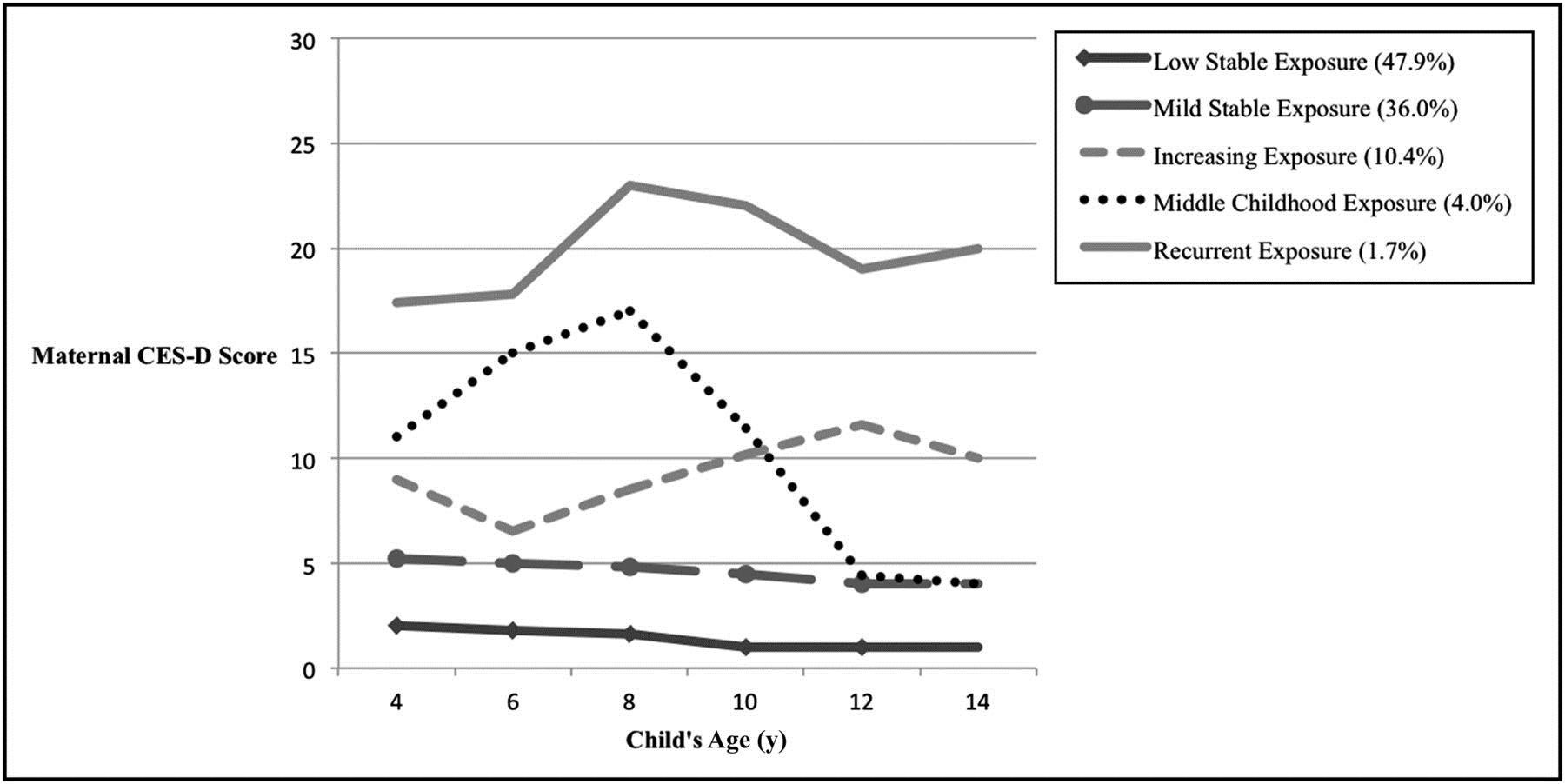Maternal depression has been identified as a risk factor for adolescent depression. In addition, maternal depression appears to increase the risk of certain behavioral problems in children; however, it appears that the timing of exposure may play an important role in mediating the effects of maternal depression. A recent study suggests that childhood exposure to maternal depression between the ages of 4 and 14 may result in risky behaviors later on during adolescence.
This study examined the relationship between maternal depressive symptoms and engagement in risky behaviors at 16 to 17 years of age. This study analyzed data from 2910 mother-child pairs, a nationally representative sample from Canada’s National Longitudinal Survey of Children and Youth. All of the participating children were between 2 and 5 years of age on entry into the study and were to the age of 16 or 17 years. The shortened version of the Center for Epidemiologic Studies Depression Scale (CES-D) was used to assess maternal depressive symptoms when the children were between the ages of 4 and 15 years. Between 16 and 17 years of age, the adolescent children were asked questions about their engagement in risky behaviors over the past year: smoking, use of various substances, delinquent behaviors such as stealing, destroying property, getting into fights, carrying a weapon, and running away.
Trajectories of Maternal Depression
The researchers described five distinct trajectories of maternal depression:
- A stable, low depression reference group (47.9%),
- A group with persistent mild maternal depressive symptoms (36%),
- A group with maternal depressive symptoms during mid childhood (ages 6 to 10 yrs, 4.0%),
- A group with maternal depressive symptoms only during adolescence (ages > 10 yrs, 10.4%),
- A group with recurrent maternal depressive symptoms (1.7%).
While the study focuses mostly on the evolution of risky behaviors in the children, this part of the article is also quite interesting in that it gives us a better sense of the prevalence of maternal depression. Half of the children in the study were exposed to some level of maternal depression, mostly milder (but persistent) levels of depression. About 18% of the children were exposed to more severe levels of depression at some point between the ages of 4 and 14. These five subtypes are shown in this figure:
Risky Behaviors in Adolescence
The researchers showed that the adolescents exposed to maternal depressive symptoms during middle childhood (the dotted line above) had numerous delinquent behaviors. This group demonstrated was:
- More likely to start using cigarettes at an earlier age (hazard ratio [HR], 2.15; P < .005)
- More likely to use alcohol, marijuana, and hallucinogens (HRs, 1.43, 1.91, and 3.51, respectively; all, P < .05)
- Significantly more likely to engage in both violent (P= .02) and nonviolent delinquent behaviors (P = .03)
The recurrent maternal depressive symptoms group only had significantly higher rates of nonviolent delinquent behaviors, such as stealing or destruction of property, compared with the low- exposure group (P= .01). The other groups exposed to maternal depression did not have an increased risk of delinquent behaviors.
This is one of the largest studies thus far looking at the effects of maternal depression on children. The results of this study suggest that exposure to maternal depressive symptoms, particularly in middle childhood, is associated with greater and earlier engagement in high risk behaviors. The researchers speculate that middle childhood constitutes a particularly vulnerable time for children for a variety of reasons.
Middle childhood is a period of increasing cognitive, social, and emotional development; children in this age group begin school, refine their linguistic skills, and increasingly engage in social peer relationships. Cognitive and socioemotional development may be particularly relevant to the development of both internalizing and externalizing behavioral patterns. During childhood, mothers are able to foster development through responsive parenting behaviors. Conversely, pathways through which maternal depression affects the child include exposure to maladaptive maternal affect and behaviors, as well as exposure to the stressful environmental context associated with maternal depression. Exposure to maternal depressive symptoms, and the associated negative parenting behaviors during middle childhood, as the child enters a stage of increased development may result in lasting developmental deficits, predisposing the child to future health risk behavior. Children may be more sensitive to the symptoms of maternal depression during this age window, resulting in lasting effects for adolescents.
The ancillary finding that there are high rates of maternal depression is also quite concerning. While we have focused primarily on screening for depression in and providing support to new mothers, this study argues that we should view all mothers at risk for depression. Future studies are needed to determine how best to identify and treat depression in the mothers of older children and to develop interventions that decrease vulnerability to risky behaviors in their adolescent children.
Ruta Nonacs, MD PhD
Wickham ME, Senthilselvan A, Wild TC, Hoglund WL, Colman I. Maternal depressive symptoms during childhood and risky adolescent health behaviors. Pediatrics. 2015 Jan;135(1):59-67.









Leave A Comment